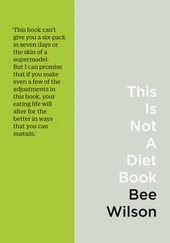At the time of writing, Imamura’s study is the most complete snapshot we have of diet quality on a truly global scale as it relates to patterns of ill health. In all, the researchers managed to find data to cover 88.7 per cent of the adult population of the whole world. From this, they built up a picture of what we eat from two different angles: on the one hand, how much healthy food countries eat and on the other hand, how much unhealthy food.
A person may enjoy eating a slice of fresh melon but also enjoy munching on greasy fried onion rings. Countries, too, have contradictory tastes. Since 1990, the planet’s consumption of ‘healthy’ items has undoubtedly been growing, but this does not mean that people necessarily have a healthy pattern of eating. Take fruit. Since 1990, world vegetable consumption has remained static but the world’s fruit intake seems to have gone up by an average of 5.3 grams per person per day. For people who can afford to buy it, fresh fruit, from grapes to watermelon, has become one of the world’s favourite snacks. Fruit is expensive and it’s one of the first things parents buy as a treat for their children when they start to have disposable income. The rise of fruit gives credence to the fairy story about modern food (setting aside the fact that modern fruit is often not as nutritious as fruit used to be). Out of 187 countries, all but twenty or so have increased their intake of healthy foods, especially foods such as fruit and unsalted nuts which are eaten between meals. 12
But Imamura’s paper also supports the food horror story. The data clearly shows that diets high in sugary drinks, trans fats and processed meats became much more common in the world between 1990 and 2010. In 2010, around half the countries in the world were eating a diet higher in unhealthy items than in 1990, often drastically higher. The prevalence of unhealthy items in our diets is increasing more rapidly than our consumption of healthy foods. But it is not increasing everywhere to the same extent.
The biggest surprise to come out of the data was that the highest-quality overall diets in the world are mostly to be found not in rich countries but in the continent of Africa, mostly in the less developed sub-Saharan regions. The ten countries with the healthiest diet patterns, listed in order with the healthiest first, came out as:
Chad
Mali
Cameroon
Guyana
Tunisia
Sierra Leone
Laos
Nigeria
Guatemala
French Guiana
Meanwhile, the ten countries with the least healthy diet patterns, listed in order from the bottom up, were:
Armenia
Hungary
Belgium
USA
Russia
Iceland
Latvia
Brazil
Colombia
Australia
The idea that healthy diets can only be attained by rich countries is one of the food myths, Imamura says. He found that the populations of Sierra Leone, Mali and Chad have diets that are closer to what is specified in health guidelines than those of Germany or Russia. Diets in sub-Saharan Africa are unusually low in unhealthy items and high in healthy ones. If you want to find the people who eat the most wholegrains, you will either have to look to the affluent Nordic countries where they still eat a lot of rye bread or to the poor countries of southern sub-Saharan Africa, where a range of nourishing grains such as sorghum, maize, millet and teff are made into healthy main dishes usually accompanied by some kind of stew, soup or relish. Sub-Saharan Africa also does very well on consumption of beans, pulses and vegetables. The average Zimbabwean eats 493.1 grams of vegetables a day, compared with just 65.1 grams for the average person in Switzerland. 13
It was Imamura’s conclusion about the high quality of African diets that ruffled feathers in the world of public health. What about African hunger and scarcity? Zimbabweans may eat more vegetables than the Swiss, but there is more to health than vegetables, given that life expectancy in Zimbabwe in 2015 was just fifty-nine years of age compared with eighty-three for the average Swiss person. Some scientists argue that the low score for unhealthy foods in some African and Asian countries is actually a sign of diets that are ‘poor’ in various ways. If the people of Cameroon consume low amounts of sugar and processed meat, it is partly because they are consuming low amounts of food all round. 14
Imamura does not deny, he tells me, that the quantity of food available is very low in some of the African countries, but adds, ‘That’s not the point of our study. We were looking at quality.’ His paper was predicated on the assumption that everyone in the world was consuming 2,000 calories a day. Imamura was well aware that is far from the case in sub-Saharan Africa, where the prevalence of malnourishment is around 24 per cent according to the Food and Agriculture Organisation. But he and his colleagues wanted to isolate the question of food quality from that of quantity. Traditional public health nutrition, he observes, was so fixated on the question of hunger that it paid too much attention to the quantity of food people had access to without considering whether the food itself was beneficial for human health. 15
Africa’s hunger can easily blind us to the sheer quality and variety of food that people enjoy in much of the continent. The findings of Imamura’s paper came as no surprise to Graeme Arendse, a South African journalist at the Chimurenga Chronic , a magazine celebrating pan-African culture. In 2017 Arendse helped put together a special food issue of the magazine which challenged the Western idea that African food was all about deprivation and suffering. On a sunny winter’s day, sitting in his offices in Cape Town above the pan-African market in the city centre, Arendse tells me that ‘this story of scarcity is not true’. Arendse sees traditional African food as deeply diverse, with much of it very healthy. A short walk from his office in Cape Town, Arendse can pick up a takeaway of fish and brown rice at a Malian place where he likes to go. Other days, when the mood hits, he goes to a different café to buy a bowl of Nigerian egusi soup made from melon seeds with seafood and bitter greens, for the same price as a fast food meal from McDonald’s.
Arendse worries that unless traditional African cuisine with its soups and stews of many kinds is celebrated more, it will lose out even more to the fast foods and convenience foods that he notices becoming so popular now in South Africa. On the bus into work, in just the past couple of years, he has started to see some commuters breakfasting on crisps and cans of cola. ‘I never saw that in the past.’
Dietary patterns are getting rapidly worse in much of Africa, including South Africa. In recent years, monied South Africans have abandoned the old dinners of mealy maize and have started to drink bottles of sparkling mineral water and to eat salads of roasted vegetables and feta cheese, and, yes, many kinds of avocado toast. But there has also been a colossal rise in the consumption of packaged snack foods and sugary drinks. The balance of what South Africans eat is tipping away from the old vegetables and stews of the rest of sub-Saharan Africa and towards a Westernised diet of fried chicken and burgers and oversized portions of pasta. 16
‘These young people have stretched their stomachs,’ observed an old black South African in 2016, startled by the way that children suddenly expected to eat fried foods and meat every day. Middle-income countries such as South Africa have experienced the full fairy tale and the full horror story of food at the same time. Rates of both under-nutrition and over-nutrition in South Africa exceeded 30 per cent of the population as of 2016. In the old days, South Africans ate many wild fruits and breakfasted on a thick maize or sorghum porridge, seasoned to taste with a few drops of vinegar. Now, breakfast is more likely to be nutrient-poor white industrial bread with margarine or jam. With escalating sugar consumption, tooth decay is rising in South Africa at an alarming rate. 17
Читать дальше












